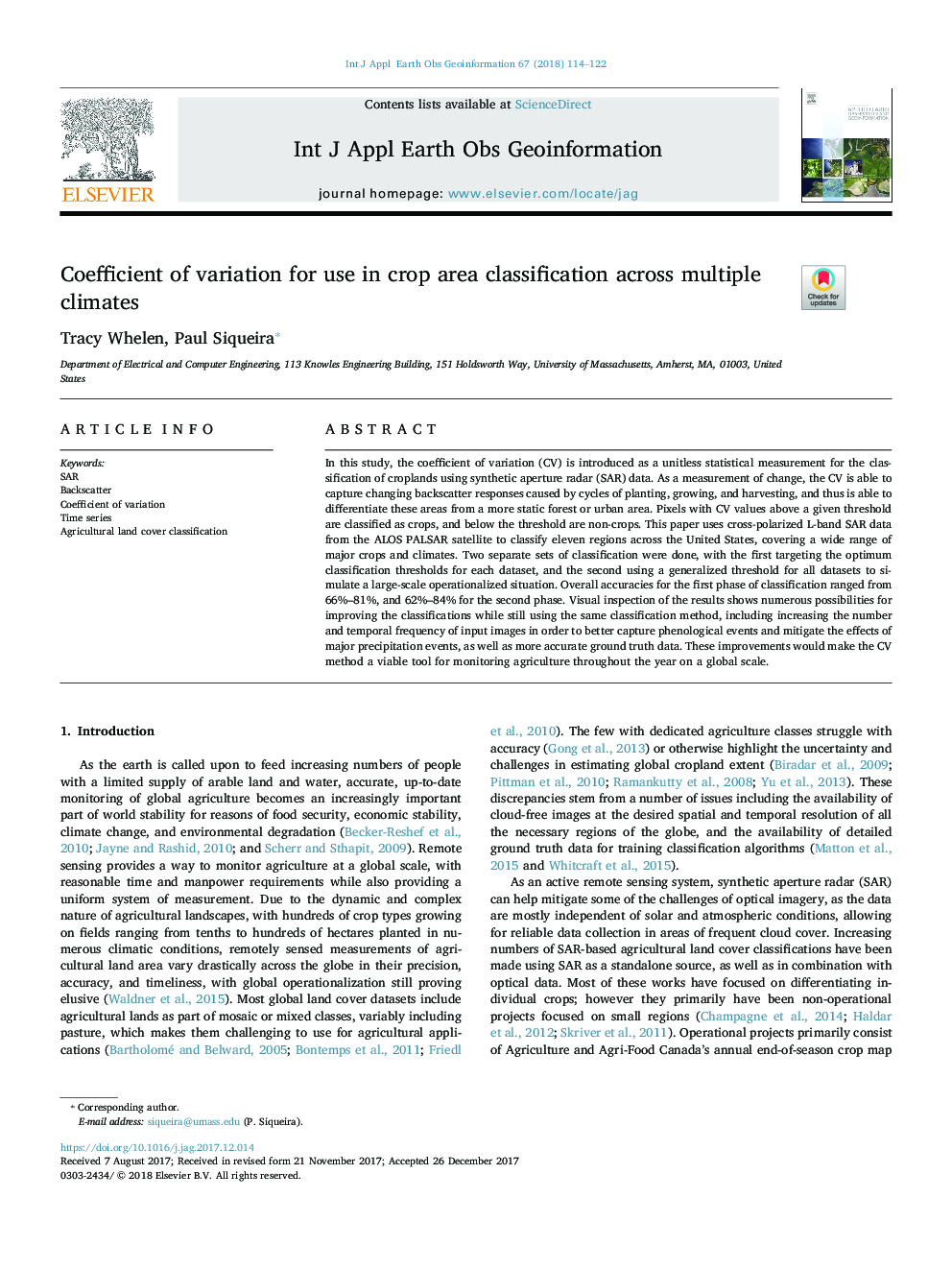| Article ID | Journal | Published Year | Pages | File Type |
|---|---|---|---|---|
| 8867931 | International Journal of Applied Earth Observation and Geoinformation | 2018 | 9 Pages |
Abstract
In this study, the coefficient of variation (CV) is introduced as a unitless statistical measurement for the classification of croplands using synthetic aperture radar (SAR) data. As a measurement of change, the CV is able to capture changing backscatter responses caused by cycles of planting, growing, and harvesting, and thus is able to differentiate these areas from a more static forest or urban area. Pixels with CV values above a given threshold are classified as crops, and below the threshold are non-crops. This paper uses cross-polarized L-band SAR data from the ALOS PALSAR satellite to classify eleven regions across the United States, covering a wide range of major crops and climates. Two separate sets of classification were done, with the first targeting the optimum classification thresholds for each dataset, and the second using a generalized threshold for all datasets to simulate a large-scale operationalized situation. Overall accuracies for the first phase of classification ranged from 66%-81%, and 62%-84% for the second phase. Visual inspection of the results shows numerous possibilities for improving the classifications while still using the same classification method, including increasing the number and temporal frequency of input images in order to better capture phenological events and mitigate the effects of major precipitation events, as well as more accurate ground truth data. These improvements would make the CV method a viable tool for monitoring agriculture throughout the year on a global scale.
Related Topics
Physical Sciences and Engineering
Earth and Planetary Sciences
Computers in Earth Sciences
Authors
Tracy Whelen, Paul Siqueira,
